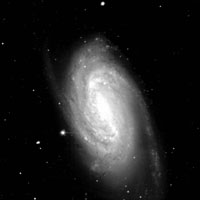Leo, Leo Minor and Sextans
Leo is one of the most conspicuous of the spring constellations.
Leo is one of the most ancient of the constellations, but neighbouring Leo Minor and Sextans are much fainter groupings introduced by the Danzig astronomer Hevelius in the 17th century. Sextans is said to represent his favourite sextant, which he had lost, perhaps accounting for the complete obscurity of this constellation.
The brightest star of Leo is Regulus, at the base of the sickle. Regulus has the distinction of being the faintest of the 21 first magnitude stars and it forms a wide double with an eighth magnitude companion. The finest double star in Leo however, and indeed one of the finest in the whole sky is Algeiba or Gamma Leonis, the next brightest star in the sickle. A telescope will split Algeiba into a pair of golden coloured suns of 2nd and 3rd magnitude, separated by about 5 arcseconds.
Apart from Algeiba, the main deep sky attractions of Leo and its obscure neighbours are galaxies.

NGC2903
Further east under the star Theta Leonis, M65 and M66 are another pair of spirals sharing the same low power field. The edge-on spiral NGC 3628 may be seen slightly to the north. A number of other interesting galaxies from the New General Catalogue are shown on the accompanying map. The most notable of these are probably NGC 2903, a fine face-on spiral to the west of Epsilon Leonis in the sickle, and NGC 3115, a bright edge-on galaxy, known as the “Spindle” in Sextans. All of the galaxies shown are around magnitude 11 or brighter.
POWERPOINT SLIDE SHOW (204KB)